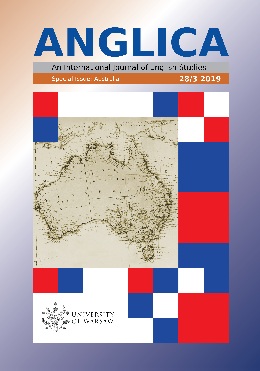Trauma, Gothic Apocalypse and Critical Mourning: The First World War and Its Aftermath in Chris Womersley’s Bereft
Trauma, Gothic Apocalypse and Critical Mourning: The First World War and Its Aftermath in Chris Womersley’s Bereft
Author(s): Anna Branach-KallasSubject(s): Theoretical Linguistics, Applied Linguistics
Published by: Instytut Anglistyki Uniwersytetu Warszawskiego
Keywords: Australian fiction;first world war;trauma;mourning
Summary/Abstract: The article focuses on Bereft (2010), a novel by Australian writer Chris Womersley, which applies the framework of trauma to depict the (failed) reintegration of the returning soldiers after the First World War. Using Gothic and Apocalyptic tropes, Womersley addresses the question of the aftermath of violence in the lives of an Australian family and the Australian nation. By combining the insights of trauma and Gothic studies, the article demonstrates how Bereft undermines the meta-narrative of Australian participation in the First World War, questioning the myth of Anzac and national cohesion. It proposes to read the novel as an example of critical mourning, which, rather than cure from trauma, suggests a re-examination of the dramatic sequels of the imperial conflict. Rage seems to offer here an intriguing alternative to the forgetful practices of commemoration. By revising the militarized national mythology, Bereft redefines the First World War in terms of loss, trauma and desolation, and negotiates a place for broken bodies and minds in Australian cultural memory.
Journal: ANGLICA - An International Journal of English Studies
- Issue Year: 28/2019
- Issue No: 3
- Page Range: 97-108
- Page Count: 12
- Language: English

